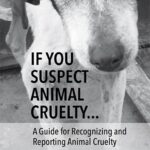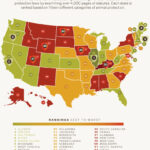In recent years, the conversation surrounding animal testing in the cosmetics industry has gained significant momentum. Consumers are increasingly wary of the ethical implications of their beauty products, prompting a surge of interest in cruelty-free alternatives. Among the major players in this arena is Maybelline, a well-known cosmetics brand under the umbrella of L’Oréal. This article delves into the findings from 2017 regarding Maybelline’s testing practices and seeks to clarify whether the brand adheres to humane standards.
Understanding the intricacies of animal testing in cosmetics is crucial. The term “animal testing” generally refers to the practice of using non-human animals to evaluate the safety and efficacy of products. This can include a range of methodologies, from skin irritation tests conducted on rabbits to ingestive toxicity assessments in mice. The ethical dilemmas presented by these practices evoke a strong response from animal rights advocates and conscientious consumers alike, who question the necessity and humanity of such measures.
For cosmetics companies, the regulatory landscape is complex. In some regions, including the European Union, animal testing for cosmetics has been banned since 2013. However, elsewhere, including in territories where Maybelline operates, regulations remain less stringent, allowing for the continued use of animal testing under certain conditions. This geographical disparity raises important questions about the ethical responsibilities of global brands.
Maybelline’s position in the cruelty-free discourse is contentious. As a subsidiary of L’Oréal, which has been criticized for its testing practices in countries where such regulations are not enforced, Maybelline faces scrutiny. The term “cruelty-free” is not universally defined nor regulated, which further complicates consumer understanding. Some brands claim to be cruelty-free yet may sell in markets like China, where animal testing is still mandatory for foreign cosmetics brands. This leads to ambiguity about their genuine adherence to animal welfare.
The findings from community-driven investigations and independent animal welfare organizations revealed that in 2017, Maybelline had not confirmed a comprehensive cruelty-free status. Reports indicated a lack of transparency regarding suppliers and production processes, which raises red flags for consumers interested in ethical practices. Notably, brands that do not conduct any animal testing themselves but rely on third-party vendors for raw ingredient testing may still inadvertently support animal cruelty.
Moreover, consumer sentiment plays a pivotal role in shaping brand policies. As awareness grows, so does the demand for ethical choices in beauty products. Many consumers are willing to research and support brands that align with their values; thus, the pressure on companies like Maybelline to reevaluate their policies becomes ever more pressing. Savvy shoppers are now finding resources and apps dedicated to highlighting cruelty-free cosmetics, which can influence purchasing decisions in significant ways.
In addition to animal testing policies, ethical consumers are increasingly seeking information on the ingredients used in their products. The prevalence of synthetic compounds and the potential for severe adverse reactions are concerning. This has prompted many brands, including those purporting to be cruelty-free, to turn to more natural formulations. The move towards ethical sourcing and sustainable practices is not only a reflection of changing consumer preferences but also an essential step towards a more responsible cosmetics industry.
The plight of animals in testing facilities is often depicted in stark terms. Mice and rabbits are frequently subjected to harsh environments that can culminate in extreme suffering. This has led to calls for legislative change and the development of alternative testing methods, such as in vitro testing, which does not involve live animals. The ongoing advancement in biotechnology offers hope for more humane approaches in product testing, offering a glimmer of optimism for the future of cruelty-free cosmetics.
While it may be disheartening to find that a well-known brand like Maybelline has not achieved an unequivocal cruelty-free status, it serves as a reminder of the complexities of the cosmetics industry. The intersection of consumer choice, corporate responsibility, and ethical practice is intricate and, at times, fraught with contradictions. Therefore, informed consumers can effect change; by choosing to purchase products from brands that refuse to compromise on their commitment to animal welfare, they send a powerful message to the industry as a whole.
In conclusion, while Maybelline has made strides in other areas, the question of whether it tests on animals is not definitively answered in the affirmative or negative. The findings from 2017 cast a shadow on its cruelty-free labeling, raising critical questions about transparency and ethical responsibility. As consumers continue to advocate for an end to animal testing in cosmetics, it is essential for brands to respond with clarity, commitment, and compassion. It is only through the collective voice of the compassionate consumer that we can pave the way towards a truly cruelty-free future.








